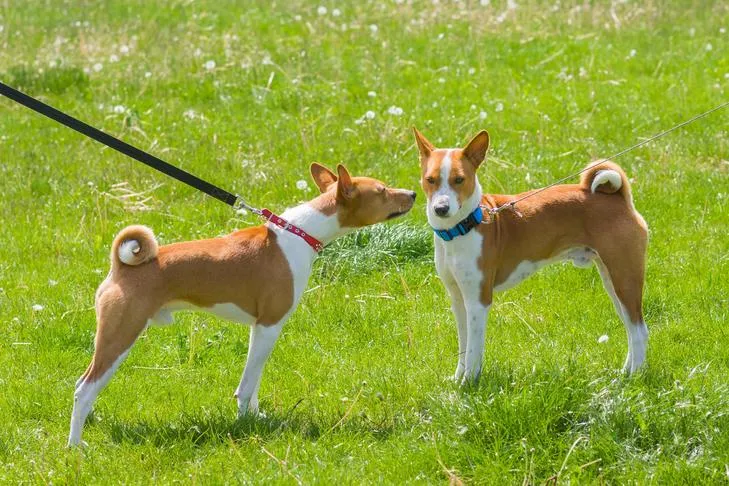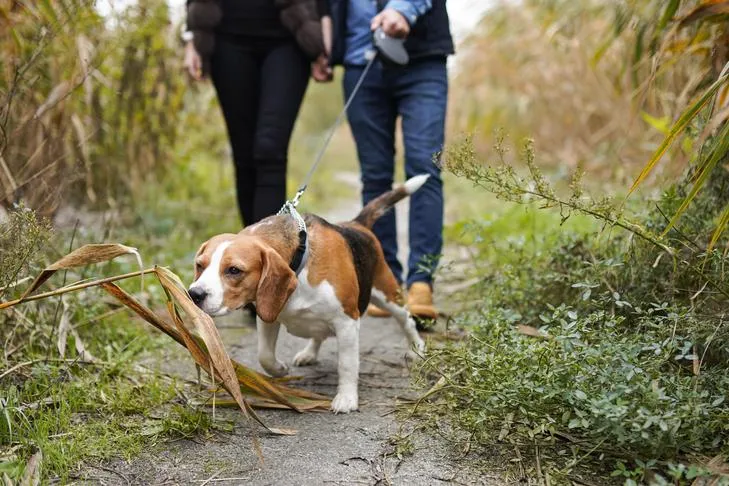Walking your dog should be an enjoyable experience for both of you, a chance to bond, explore, and get some fresh air. However, for many dog owners, walks quickly become a frustrating tug-of-war, with their canine companion dragging them down the street. This common behavior, often called “leash pulling,” can be more than just annoying; it can be unsafe, leading to injuries for both the dog and the handler, and it limits the enjoyment and control you have over your dog in public spaces. Learning How To Keep Dogs From Pulling When Walking is a fundamental aspect of responsible dog ownership and greatly improves the quality of your shared adventures.
While leash pulling is a widespread issue, it’s a learned behavior that can be corrected with consistent training and the right techniques. By understanding why dogs pull and implementing effective strategies, you can transform your walks from a battle of strength into a harmonious stroll. This guide outlines 10 proven tips that will help you teach your dog appropriate leash manners, ensuring that you and your furry friend can enjoy peaceful walks together. If you’re also struggling with other unwanted behaviors, remember that consistency is key, whether you’re trying to prevent nighttime urination or master loose-leash walking.
1. Always Reward Good Leash Behavior
Positive reinforcement is the cornerstone of effective dog training. Dogs are more likely to repeat behaviors that earn them a reward, whether it’s a tasty treat, enthusiastic praise, or even the opportunity to sniff an interesting spot. When your dog walks politely on a loose leash, it’s crucial to acknowledge and reinforce that desired behavior. Don’t take good leash manners for granted; actively show your dog that you appreciate their cooperation.
Carry treats with you on walks and be ready with encouraging words or gentle pets. In the initial stages of training, reward frequently and generously. As your dog’s skills improve and they become more reliable, you can gradually reduce the reliance on treats and incorporate “life rewards,” such as allowing them to explore a patch of grass or greet another friendly dog, as a natural consequence of good behavior.
2. Never Let Your Dog Walk When They Are Pulling
Your dog’s primary motivation for pulling is often to get to something or somewhere faster. If you allow them to continue moving forward while the leash is taut, you are inadvertently rewarding their pulling behavior. This teaches them that pulling gets them what they want, thereby strengthening the undesirable habit. The golden rule for stopping leash pulling is simple: if the leash is tight, the walk stops.
The moment your dog pulls, stop immediately. Plant your feet firmly and wait. Do not move again until the leash goes slack and your dog either looks back at you or reduces the tension. This might mean stopping every few steps initially, but your dog will quickly learn that pulling brings the walk to a halt, while a loose leash keeps the adventure going. This method is highly effective in teaching your dog that polite walking is the only way to proceed.
 Two Basenjis meet outdoors, one on leash, demonstrating interaction during walks.
Two Basenjis meet outdoors, one on leash, demonstrating interaction during walks.
3. Wait for a Loose Leash Before You Walk
Knowing when to resume walking after a stop is just as important as knowing when to stop. Once you’ve halted due to pulling, wait for the leash to form a “J-shape,” indicating it’s slack. Additionally, observe your dog for a moment of attention directed back at you. This might involve them turning their head, making eye contact, or physically moving closer to you to see why you’ve stopped.
When you see these signs, immediately praise your dog and offer a treat right by your side, then continue your walk. This teaches your dog that returning their focus to you and releasing tension on the leash is the cue for the walk to resume and earns them a reward. It reinforces the idea that polite behavior is what moves the walk forward.
4. Incorporate Life Rewards on Your Walk
Walks should be a rich and engaging experience for your dog, offering more than just a bathroom break. They provide essential physical exercise and crucial mental stimulation. To enhance your loose-leash training, integrate “life rewards” – everyday things your dog enjoys – into your walks as a direct consequence of good behavior. For instance, if your dog walks a consistent distance (e.g., 10 feet) without pulling, release them with a verbal cue like “go sniff!” for a few minutes.
This strategy helps your dog understand that walking politely unlocks access to the exciting parts of their walk, such as sniffing a bush, investigating an interesting scent, or briefly greeting a calm stranger. These bonus rewards significantly motivate your dog and prove that good leash manners truly pay off. Just as you might teach your dog not to jump by rewarding calm behavior, rewarding loose-leash walking with desirable activities reinforces the desired conduct.
5. Walk at a Good Pace
Often, human walking speeds are too slow for dogs, even for smaller breeds with their quick little legs. This discrepancy in pace can be a major reason why dogs pull – they naturally want to move faster and explore. To help your dog feel more engaged and less inclined to pull, try to choose a walking pace that is comfortable and stimulating for both of you.
While you can certainly train your dog to match your exact speed, a slightly brisker pace during the initial training phases can make it easier for them to learn not to pull. A quicker walk can keep them more focused and less likely to fall behind or surge ahead, thus making the leash less likely to become taut.
6. Be Consistent With Your No-Pulling Rule
Consistency is paramount in dog training. It can be tempting to allow your dog to pull when you’re in a hurry, perhaps rushing to work or trying to get them out of the cold for a quick potty break. However, every time you let your dog pull, you reinforce the undesirable behavior and undermine your training efforts, effectively taking a step backward.
The “no-pulling” rule must be applied consistently, regardless of the situation or your personal timeline. Until your dog reliably walks on a loose leash for a significant distance, save your dedicated walks for when you have enough time to train properly. For quick relief, let your dog do their business in the yard or near the curb without the expectation of a lengthy, perfect walk. This unwavering consistency will solidify their understanding of acceptable leash behavior. When you are consistent in your training, you will see better results, whether you are teaching new commands or addressing issues like dealing with indoor peeing.
 Beagle pulling on a leash to sniff during an outdoor walk, illustrating a common pulling scenario.
Beagle pulling on a leash to sniff during an outdoor walk, illustrating a common pulling scenario.
7. Keep Training Sessions Short and Fun
Working with a determined leash puller can be frustrating, and it’s easy for both you and your dog to become discouraged if progress feels slow. Instead of pushing your dog until you’re both tired or annoyed, keep your training sessions brief, positive, and upbeat. Short, successful sessions are far more effective than long, frustrating ones.
Especially with puppies, who have very short attention spans, asking for too much too soon will likely lead to negative results. Remember, the goal isn’t to cover a certain distance on your walk initially; it’s to achieve a loose leash, even if that’s just for a few steps or to the house next door. End each session on a positive note, celebrating small victories to build your dog’s confidence and enthusiasm for future walks.
8. Be Interesting and Engaging on Walks
The outdoor world is an overwhelming sensory experience for dogs, filled with countless sights, sounds, and intriguing smells. These distractions constantly compete for your dog’s attention and can easily entice them to pull. If you are disengaged, perhaps focused on your phone or simply walking without interacting, your dog has little reason to pay attention to you.
To counteract these distractions, become the most interesting thing on the walk. Talk to your dog, offer unexpected treats, incorporate quick mini-training breaks, or play a small game like “find it” with a scattered treat. By being an active and engaging presence, your dog will be more likely to focus on you, anticipate your next move, and follow your lead rather than trying to forge ahead.
9. Stay Calm
 Cavalier King Charles Spaniel patiently waiting on a lead outdoors, demonstrating calm leash manners.
Cavalier King Charles Spaniel patiently waiting on a lead outdoors, demonstrating calm leash manners.
Walks can present various emotional situations, whether it’s the excitement of seeing a favorite person or the anxiety of encountering a barking dog. As the handler, it’s essential to control your own emotions. Dogs are incredibly perceptive and excel at reading human body language and mood. Your anxiety or frustration can easily transmit down the leash, escalating your dog’s excitement or intensifying their fear, making them more likely to pull or react inappropriately.
To help your dog remain calm and focused, you must stay calm yourself. Projecting a relaxed demeanor shows your dog that there’s nothing to be overly excited or worried about. A calm dog is much more capable of listening to your cues and behaving politely, making the training process smoother and more effective for everyone.
10. Engage Your Dog In Distracting Situations
Distractions like other dogs, squirrels, or even unfamiliar people can easily cause your dog to forget their leash manners and start pulling. Whether they pull to investigate or to retreat in fear, the common result is a tight leash. The key to overcoming this is to proactively engage your dog before they become fixated on the distraction.
As you anticipate or approach a potential distraction, get your dog’s attention immediately. Offer high-value treats, play a quick “watch me” game to establish eye contact, or ask for simple, known commands like “sit” or a “hand target.” These exercises are easy for your dog to perform and help redirect their focus from the distraction to you. By getting ahead of the distraction and keeping your dog engaged, you increase the likelihood that they will remain calm and continue walking politely, potentially not even noticing the distraction at all.
Conclusion
Teaching your dog to walk politely on a leash is a rewarding journey that strengthens your bond and makes outdoor adventures enjoyable for both of you. By consistently applying these 10 expert tips – focusing on positive reinforcement, stopping all forward motion when your dog pulls, incorporating engaging life rewards, and maintaining a calm demeanor – you can transform your dog’s leash manners. Remember that patience and consistency are your most powerful tools. With dedication, your “Dog Care Story” will soon include harmonious, loose-leash walks, establishing you as a confident leader and your dog as a well-behaved companion. If you encounter persistent challenges or wish for personalized guidance, consider consulting a certified professional dog trainer to further enhance your training success.
